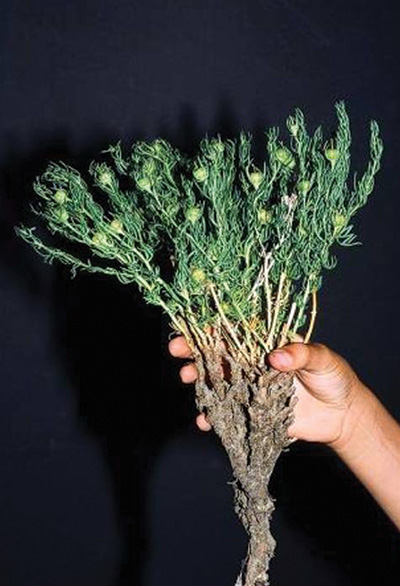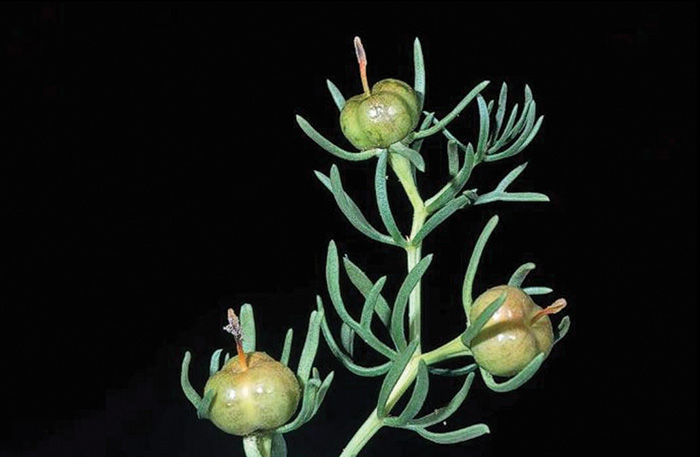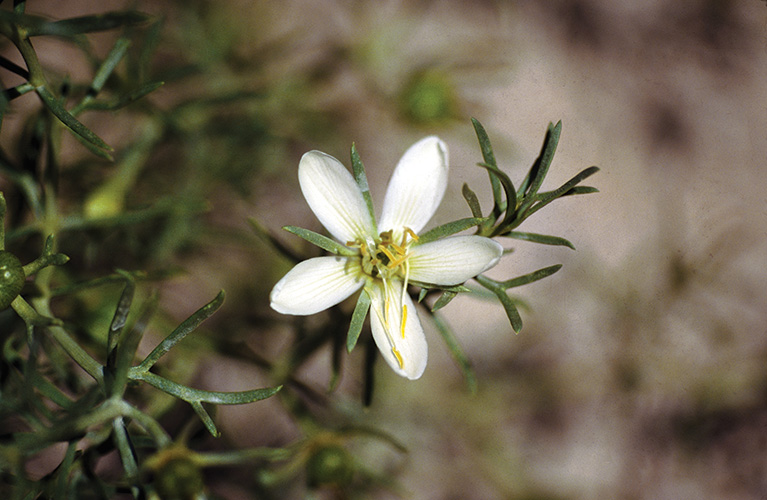Stem
- Up to 2 ft. tall; highly branched and bushy

African Rue
Leaves
- Alternate, bright green and deeply divided; leaflets strap-like (linear), narrow, 0.75-2 in. long, fleshy, lack hair (glabrous) and have smooth edges (margins)
 African Rue
African Rue
Flower
- 5 white petals surround a yellow center; 1 in. diameter; occur at leaf axils along stems
- 5 strap-like, fleshy, green sepals (0.5 in. long) that resemble leaves that are found below flower
- Seed pod is a small (less than 0.5 in. diameter), round capsule with 2-4 chambers; can be green orange or brown.

Close-up of African Rue flower
Root
- Woody, branched taproot with short, creeping roots
Other
- Grows best in dry, disturbed sites; often infests roadsides, waste areas, washes and desert areas; known to occur in Churchill, Mineral, Washoe, and White Pine counties.
- Perennial; reproduces by both seeds and roots
- All plant parts poisonous to livestock and humans
Control
- Repeatedly dig or pull individual plants; remaining roots can produce new plants
- Apply glyphosate, imazapyr or metsulfuron to actively growing plants
Blecker, L., Creech, E., Dick, J., Gephart, S., Hefner, M., Kratsch, H., Moe, A., Schultz, B.
2020,
Nevada Noxious Weed Field Guide – African rue,
Extension, University of Nevada, Reno, Field Guide


